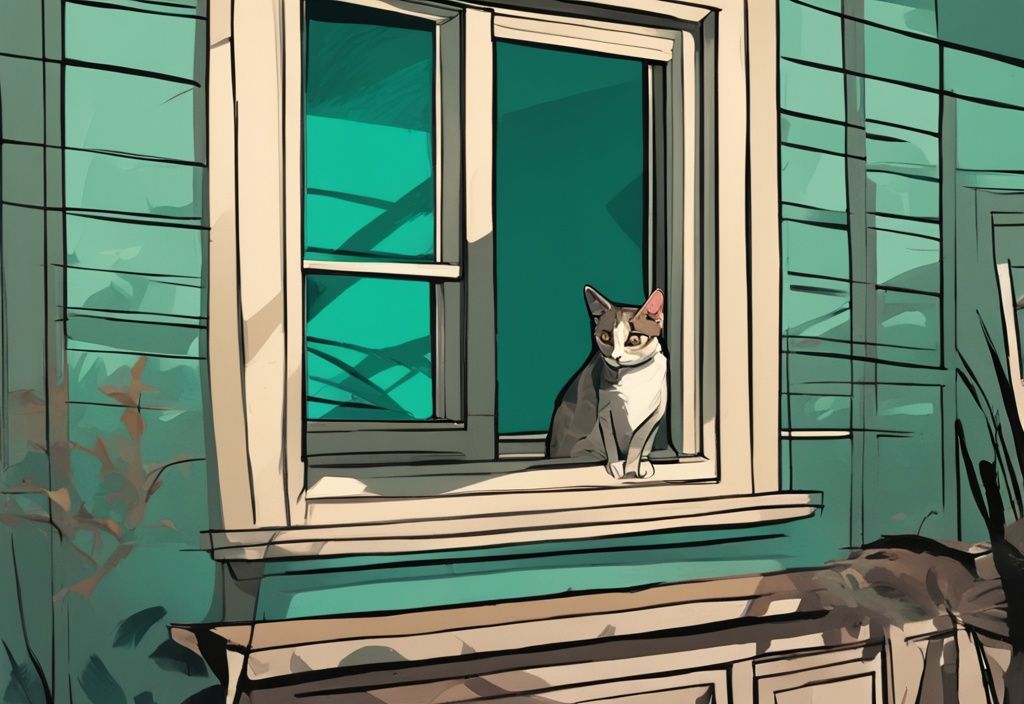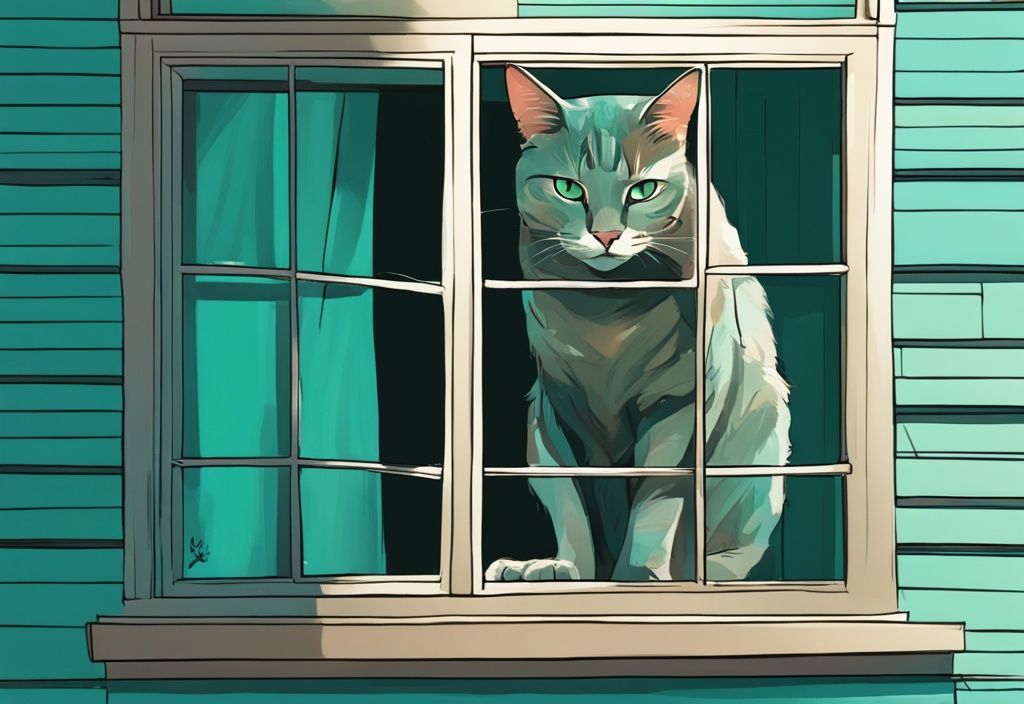Ever found yourself asking, “When is it too late to tame a feral cat?” Well, you’re not alone. As an avid pet lover, I’ve often pondered this question myself. The answer lies in understanding the crucial socialization window of kittens, where they’re most receptive to human interaction. But what happens when this window closes?
In this article, we’ll delve into the ideal age for taming, the challenges of dealing with older cats, and some alternative solutions. Whether you’re a seasoned cat rescuer or just a curious pet lover like me, we’ll uncover the secrets to transforming a wild feline into a loving companion.
So, are you ready to embark on this wild, whiskered journey? Let’s dive in!
Understanding the Window for Taming Feral Cats
Ever wondered when it’s too late to tame a feral cat? Knowing the right time frame can make all the difference in turning a wild little furball into a loving companion. Let’s dive into the magical world of kitten socialization and discover the key moments that can transform a feral feline into a friendly pet.
The Critical Socialization Window
Picture this: a tiny kitten, just 3 weeks old, eyes wide open to the world. This is the start of the critical socialization period, which lasts until they’re about 9 weeks old. It’s like a golden hour for kittens, where they’re naturally curious and more open to human interaction. During this time, even a gentle pat or a soft whisper can work wonders. But, what happens if you miss this window? Well, think of it as trying to teach an old dog new tricks—possible, but a bit more challenging. Understanding when it’s too late to tame a feral cat helps set realistic expectations and strategies.
Optimal Age for Taming Feral Kittens
Now, if you’re thinking about rescuing a feral kitten, aim for when they’re between 4 and 5 weeks old, as this is when they are most receptive to socialization. For a detailed understanding of the importance of socialization during this critical period, check out this Kitten Socialization Checklist. They’re still in that sweet spot of the critical socialization window, much like my Border Collie, Max, when he first learned to fetch. Kittens at this age are like little sponges, soaking up every bit of love and attention you give them. By the time they hit 6 weeks, they’re more likely to become the purring lap cats we all adore.
But here’s the kicker: the magic starts to fade after 16 weeks. It’s like trying to convince my cat, Whiskers, to share her favorite sunbeam—good luck! By then, their behaviors are more set, making it trickier to win them over. So, recognizing when it’s too late to tame a feral cat is crucial for tailoring your approach and ensuring both you and the kitten have a rewarding experience.
Challenges and Considerations in Taming Older Feral Cats
Ever wondered when is it too late to tame a feral cat? This section dives into the complexities of taming older feral cats, exploring both the emotional hurdles and the health considerations involved. Understanding these aspects can help you decide if you’re ready to embark on this rewarding, yet challenging journey.
Behavioral and Emotional Factors
Picture this: you’re trying to befriend a cat who’s spent most of its life dodging humans like a ninja. Taming older feral cats can feel like trying to teach an old dog new tricks—or in this case, an old cat! These cats often come with a suitcase full of wariness and fearfulness, which makes the taming process as tricky as getting my Border Collie, Max, to ignore a squirrel. So, when is it too late to tame a feral cat? Well, older cats might have behaviors as set as concrete, making it hard for them to swap the wild for a cozy couch life. But hey, every cat is unique, just like my Whiskers, who still surprises me with his quirks! Understanding these emotional and behavioral factors is key if you’re considering inviting an older feral cat into your home.

Health Risks and Safety Concerns
Now, let’s chat about the health risks and safety concerns when pondering when is it too late to tame a feral cat. Feral cats might carry a few unwanted guests like rabies or feline leukemia, which could be a real party pooper. Before you roll out the welcome mat, it’s crucial to weigh these risks. Safety first, right? Just like I always make sure Max doesn’t chase after cars, ensuring safety during the taming process is vital. Proper handling techniques and maybe a little help from the pros can make this adventure safer for both you and the kitty. After all, a safe environment is a happy environment!
Key Factors Influencing Taming Success
When it comes to taming a feral cat, several factors come into play. From the cat’s unique personality to the patience of the human involved, each aspect can significantly influence the outcome. Let’s dive into these key factors and discover when it might be too late to tame a feral cat.
Cat’s Personality and Temperament
Ah, the delightful quirks of feline personalities! Just like my Whiskers, who has a penchant for chasing imaginary mice, each feral cat brings its own set of traits to the table. Some might be naturally curious about humans, making the taming journey a breeze. Others, however, might be as stubborn as a cat with its favorite sunbeam, resisting every effort. Have you ever wondered when it is too late to tame a feral cat? Well, older cats with deeply ingrained habits might be more challenging to socialize. But remember, every cat is a unique puzzle, and finding the right approach is key. Tailoring your methods to fit their temperament can make all the difference.
Human Patience and Dedication
Patience, my dear reader, is truly a virtue in the world of feral cat taming. Imagine trying to teach Max, my Border Collie, to sit still when there’s a squirrel around—it’s quite the challenge! Similarly, taming a feral cat requires time and dedication. This isn’t a sprint; it’s a marathon. The process can take weeks, months, or even years, depending on the cat’s personality. Consistent, gentle handling and gradual exposure to human environments are your best friends here. And let’s not forget the magic of positive reinforcement—it’s like catnip for building trust and reducing fear.
Knowing when it is too late to tame a feral cat can help set realistic expectations. It’s all about aligning your efforts with the cat’s well-being. Yes, the journey demands commitment, but the joy of seeing a once-wild cat purring contentedly in your lap? Absolutely priceless.
What If Taming Is Not Successful?
When is it too late to tame a feral cat? This is a question that pops up often, especially when our best efforts to tame don’t quite hit the mark. But hey, that’s okay! There are plenty of other ways to ensure these furry friends are happy and healthy. Let’s dive into some alternatives that might just be the purr-fect fit.
Alternatives to Taming
Imagine a feral cat finding its groove in the great outdoors, with a cozy shelter and a reliable food source. Sounds like a dream, right? Sometimes, these cats are happiest in their natural habitat, where they can roam free and be themselves. It’s all about making sure their quality of life is top-notch, even if that means they stay outside. After all, who wouldn’t want to prioritize a cat’s well-being and happiness?

Trap-Neuter-Return (TNR) Programs
Now, let’s chat about Trap-Neuter-Return (TNR) programs. These are like the superheroes of feral cat management! Picture this: a team swoops in, traps the cats, gets them neutered, and then returns them to their stomping grounds. It’s a win-win! Not only does it help control the cat population, but it also cuts down on the risks of unchecked breeding. So, when pondering when it is too late to tame a feral cat, TNR offers a smart and compassionate alternative that benefits both the cats and the community. Isn’t that just paw-some?
FAQ
Ever wondered “when is it too late to tame a feral cat?” Let’s dive into some common questions and explore the possibilities with a sprinkle of fun and a dash of expertise!
-
Can adult feral cats be tamed?
- Oh, absolutely! Adult feral cats can indeed be tamed, but it’s a bit like coaxing a shy friend to join a dance party. It requires patience, a long-term commitment, and a sprinkle of expertise in cat behavior. Some might twirl right into your arms, becoming fully socialized, while others might prefer to sway at the edges, remaining semi-feral. Either way, it’s a journey worth taking!
-
What is the best age to tame a feral kitten?
- Picture this: tiny paws, big eyes, and a heart ready to love. The best age to tame a feral kitten is between 4-5 weeks. Those little furballs rescued before 6 weeks have a higher chance of blossoming into loving companions. It’s like catching a shooting star—magical and full of potential!
-
Why is early socialization important for feral kittens?
- Think of early socialization as the secret ingredient in a recipe for success. It’s crucial for increasing the likelihood of successful taming. During this critical socialization window, kittens are like sponges, soaking up human interaction and learning to adapt. Who wouldn’t want to be part of that delightful transformation?

-
Are there risks involved in taming feral cats?
- Yes, there are some risks, like health concerns and potential safety issues. Imagine it as a thrilling adventure, but with a few caution signs along the way. It’s important to take precautions and seek professional advice when trying to tame a feral cat. Safety first, fun second!
-
What if taming a feral cat is not successful?
- If taming doesn’t work out, don’t fret! Consider alternatives like TNR programs or providing outdoor care. It’s all about focusing on the cat’s well-being and ensuring they have a good quality of life. Remember, every cat deserves love, even if it’s from a distance!
Conclusion
Ah, the adventure of taming a feral cat! It’s a journey that requires a delightful mix of patience, dedication, and a sprinkle of empathy. Picture this: understanding the quirky behavioral patterns and emotional needs of each unique cat. But here’s the kicker—knowing when it is too late to tame a feral cat is key. It helps set realistic expectations and guides your approach to socialization. While there’s no definitive age limit, the magic happens during the critical socialization window between 3 and 9 weeks. During this time, kittens are like little sponges, soaking up human interaction and making your efforts much more rewarding.
But wait, there’s more! Individual factors, like a cat’s personality and any previous human encounters, play a significant role in the taming game. For older feral cats or those who missed that prime socialization window, things get a bit trickier. In these cases, alternatives like Trap-Neuter-Return (TNR) programs or providing outdoor care are worth considering. These options not only help manage the feral cat population but also ensure the cats’ well-being and quality of life. It’s like giving them a cozy outdoor retreat!
At the end of the day, the well-being of the feral cat should be the star of the show. Whether through successful taming or alternative care solutions, the goal is to boost the cat’s quality of life while respecting its natural quirks and preferences. For those caring for pregnant cats, it’s important to know if flea treatment is safe for them, as this ensures both the mother and kittens remain healthy. Understanding when it is too late to tame a feral cat allows for more informed decisions, ensuring that each cat receives the care and attention it deserves. So, let’s embrace the journey, with all its twists and turns, and make it a pawsome experience for both you and your feline friend!
